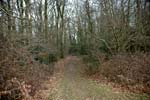Wildlife dying out in neglected forests
27-01-2007

Woodlands for sale throughout the UK. Call 01727 701330 for current availability in your area.
Vantage Land
01727 701330
www.vantageland.co.uk
Dormice, woodpeckers and bats are on the verge of dying out due to the neglect of ancient forests.
British woodlands have been allowed to decay to such an extent that entire species of plants and animals are vanishing, a parliamentary report says.
More than half the forests in England are now in effect derelict, experts at the Parliamentary Office of Science and Technology claim.
The study, published ahead of a ministerial review of English forestry strategy, said woods, some more than 400 years old, had been poorly managed and broken up into isolated fragments so small that they could no longer support rich wildlife.
Birds such as lesser spotted woodpeckers, marsh tits and woodcocks are declining at alarming rates. Conservationists fear insects such as the fritillary butterfly have almost vanished from wooded areas.
Popular plants such as violets, primrose and brambles, are also under threat. Ecology experts say poor replanting schemes over the past century have produced woods that are "middle-aged" and lack the vital forest clearings, dead wood and mature trees that are needed to sustain many species.
Jonathan Wentworth, an environment adviser and co-author of the report, said: "Half of forests in England are effectively derelict and unmanaged. They are losing the very wildlife that people use to define British woodland."
The study, drawn up to help MPs as the Department of Environment, Food and Rural Affairs revises its forestry strategy, lists a number of threats to Britain's woodland.
Ancient woods now covers less than two per cent of the country. The report states that, although much woodland is protected by laws, its ability to support wildlife has declined.
Replanting projects have left forests with few of the mature and dead trees needed to provide homes for animals such as the brown long-eared bat, which lives in natural tree hollows. The reduction in coppicing, which involves cutting down trees on a rotational basis to create clearings, has also meant that woodland canopies block out vital sunlight needed for smaller plants, flowers and insects to survive. Flowers such as primroses, bluebells and yellow archangel all rely upon clearings to grow.
The dormouse is on the International Union for Conservation of Nature's Red List of threatened species due to the disappearance of low-lying shrubs such as brambles. A survey of woodland plant life by the Forestry Commission revealed that 56 out of 72 key plant species have become "significantly less common" over the past 30 years.
The Royal Society for the Protection of Birds says the number of willow tits has fallen by 63 per cent over the same period while lesser spotted woodpecker numbers have dropped by 78 per cent to just over 3,000 pairs, due to loss of soft, dead wood.
The Forestry Commission and Natural England, the body responsible for natural heritage, are attempting to encourage rare species back to the woodland by careful felling of trees to create open environments.
David Bellamy, the botanist and TV presenter, attributed the decline in the quality of woodland to the reduction in the number of gamekeepers and gillies on country estates.
"As we have lost them, we have lost the knowledge needed to keep our woodland healthy," he said. "There needs to be a task force of foresters and gamekeepers who can help prioritise and rescue our ancient woodlands."
Get the latest woodland news direct to your desktop with the Woodland Owner RSS feed ![]() .
.